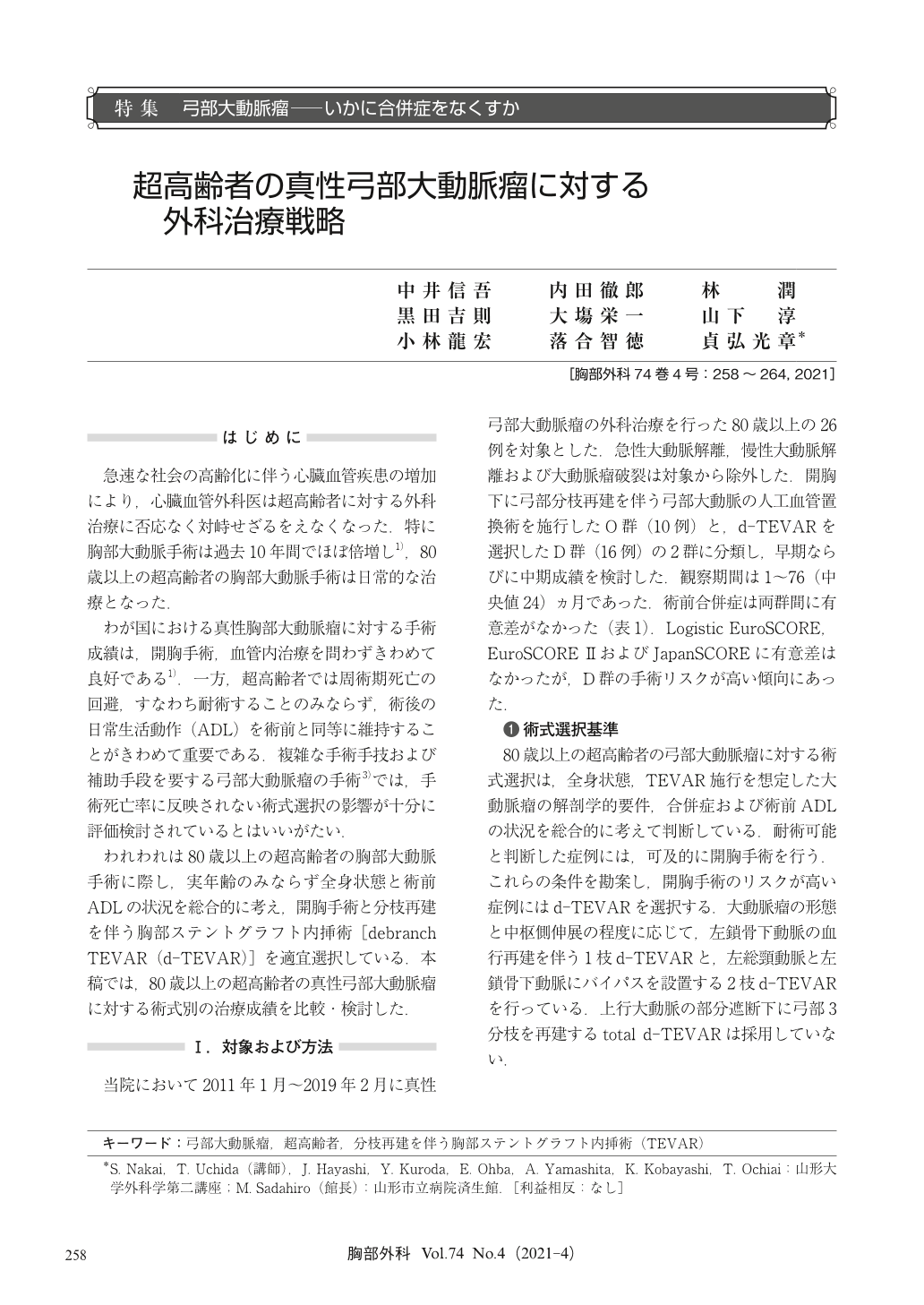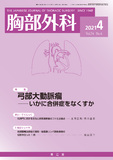Japanese
English
- 有料閲覧
- Abstract 文献概要
- 1ページ目 Look Inside
- 参考文献 Reference
急速な社会の高齢化に伴う心臓血管疾患の増加により,心臓血管外科医は超高齢者に対する外科治療に否応なく対峙せざるをえなくなった.特に胸部大動脈手術は過去10年間でほぼ倍増し1),80歳以上の超高齢者の胸部大動脈手術は日常的な治療となった.
Backgrounds:The purpose of this study was to evaluate the short- and mid-term outcomes of open aortic arch surgery and debranching thoracic endovascular aortic repair (TEVAR) in octogenarians.
Methods:Between 2011 and 2019, 26 patients with atherosclerotic aortic arch aneurysms underwent surgery at our institution [open aortic arch surgery (group O):10 patients, debranching TEVAR (group D):16 patients].
Results:There was no operative death in either group. The mean length of hospitalization and intensive care unit stay were 49 and 13 days in group O and 12 and 2 days in group O, respectively. Kaplan-Meier analyses of overall survival (1/6/12/24/36/48 months) showed mortality rates of 100/100/88/88/70/70% in group O and 100/100/87/61/43/26% in group D, respectively.
Conclusions:The acceptable outcomes was demonstrated in octogenarians underwent both open aortic arch surgery and debranching TEVAR. Because of early postoperative recovery, debranching TEVER is considered to be a feasible alternative to conventional open aortic arch surgery in octogenarians.

© Nankodo Co., Ltd., 2021


